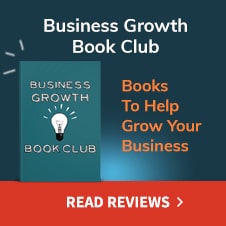I have been working with a client who was looking to grow her business by getting more clients. She believed that her typical client was a mid 30’s female, marrried or in a long term relationship and intrested in interior design.
It turned out that her biggest spending clients were actually recently single males in their 50’s, looking to put their personal mark on their home.
Once she found that out, she was able to target her marketing messages to this customer segment and as a result got a lot more business in her ecommerce store. In fact this targeting helped increase her revenues by 31% v’s the same period last year.
So, what can you learn from this?
Before you spend time writing a sales letter or designing an advert for your business, recognise this; whilst your business may serve many types of customers, some customers will be better for your business than others.
So how do you find this information and how can ou use it to your advantage in getting more clients?
The first, and most obvious starting point is the data that you already have from your existing clients.
Start with your invoicing system
Simply rank your customers based on how much they’ve spent with you by exporting your invoices by supplier into Excel or whatever spreadsheet package you’re using and sort your customers from highest spending customer to lowest.
If customers have spent money with you on many occasions, calculate the total value by customer and rank that. You can also calculate the average value of the customer spend by dividing the number of invoices by the total spent over those invoices.
Now identify what they have in common.
– That might be industry group
– It might be annual income
– Or it might be …something else
Then once you’ve identified what they have in common, look at what characteristics they share, some of which might be fairly easy from the information you have in your invoicing system such as sex or location, but others might be much more difficult.
So try doing searches on Facebook or Linkedin to see if you can find out more information about your best customers so that you can build up a background picture of what they are like.
Finally, contact the customer and ask if you could interview them to understand more about them. Explain that this market research is very valuable to helping develop your business and will only be used internally and will not be shared outside your organisation.
At the interview find out about:
– what they do
– where they do it (ie do they work for someone else or are they a business owner?)
– Age
– Family
– salary (if they are willing to share, or in a range)
– what their interests are
– what websites do they visit regularly?
– where they normally shop
– what are their unmet needs?
– what are their values and goals
Based on the feedback from your interiviews, summarise the feedback into a single customer statement – some people call this a customer “Bob” others call it a customer “avatar” and use this statement as the basis for all your communications.
Basically when you write your marketing messages imagine that you’re writing them for your Avatar.
The more of a picture you build about your big spending customers the more you’re able to understand them. The more you’re able to understand them the more likely it is that you can find others like them.
And finding more ideal customers will be a start to getting more clients and more clients will get your more business.
What do you think? Please share your thoughts in the comments below.




